Volume 9-14 (2020-26)
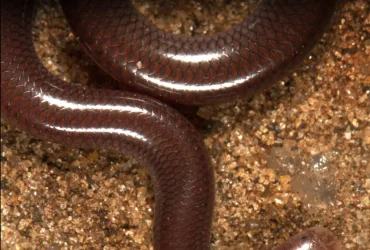 v12i2.307
v12i2.307eISSN: 1800-427X (online)
DOI:10.47605/tapro.v12i2.307
Submitted date: 8 August 2023
Accepted date: 28 October 2023
Published date: 18 November 2023
Pp. 48–58, pls. 22–24.
A NEW DWARF GECKO SPECIES (SQUAMATA: GEKKONIDAE: Cnemaspis) FROM THE NORTHERN WESTERN GHATS OF INDIA
Amit Sayyed*
*Corresponding author. E-mail: amitsayyedsatara@gmail.com
Abstract
Based on molecular and morphological data, I describe a new species of the polyphyletic gekkonid genus Cnemaspis Strauch, 1887 from the northern Western Ghats in India. The new species is the second smallest known Indian dwarf gekkonid and belongs to the clade of C. girii[i] sensu Pal [i]et al. (2021). It is genetically distinct from all congeners of the C. girii clade by p-distance ranging from 3.8 to 8.4 % on the 16S rRNA gene. Morphologically, the new species can be distinguished from all congeners by having the following combination of characters: A small species with adult males reaching a maximum SVL 27.0 mm; heterogeneous dorsal pholidosis with 11–12 longitudinal rows of enlarged tubercles; males with 3–4 femoral pores on each thigh, separated medially by 19–24 poreless scales; 63–65 middorsal scales; 136–150 ventral scales; 33–35 midbody scales; 12–14 subdigital lamellae under fourth digit of pes; feebly carinate scales on the neck and chest; and absence of conical or spine-like tubercles on flank.
Key words : dwarf geckos, girii clade, Maharashtra, molecular phylogeny, 16S, systematics, taxonomy
Section Editor: Thasun Amarasinghe
LSID:urn:lsid:zoobank.org
DOI:10.47605/tapro.v12i2.307
Submitted date: 8 August 2023
Accepted date: 28 October 2023
Published date: 18 November 2023
Pp. 48–58, pls. 22–24.
A NEW DWARF GECKO SPECIES (SQUAMATA: GEKKONIDAE: Cnemaspis) FROM THE NORTHERN WESTERN GHATS OF INDIA
Amit Sayyed*
*Corresponding author. E-mail: amitsayyedsatara@gmail.com
Abstract
Based on molecular and morphological data, I describe a new species of the polyphyletic gekkonid genus Cnemaspis Strauch, 1887 from the northern Western Ghats in India. The new species is the second smallest known Indian dwarf gekkonid and belongs to the clade of C. girii[i] sensu Pal [i]et al. (2021). It is genetically distinct from all congeners of the C. girii clade by p-distance ranging from 3.8 to 8.4 % on the 16S rRNA gene. Morphologically, the new species can be distinguished from all congeners by having the following combination of characters: A small species with adult males reaching a maximum SVL 27.0 mm; heterogeneous dorsal pholidosis with 11–12 longitudinal rows of enlarged tubercles; males with 3–4 femoral pores on each thigh, separated medially by 19–24 poreless scales; 63–65 middorsal scales; 136–150 ventral scales; 33–35 midbody scales; 12–14 subdigital lamellae under fourth digit of pes; feebly carinate scales on the neck and chest; and absence of conical or spine-like tubercles on flank.
Key words : dwarf geckos, girii clade, Maharashtra, molecular phylogeny, 16S, systematics, taxonomy
Section Editor: Thasun Amarasinghe
LSID:urn:lsid:zoobank.org
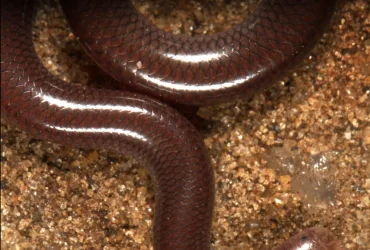 v12i2.306
v12i2.306eISSN: 1800-427X (online)
DOI:10.47605/tapro.v12i2.306
Submitted date: 14 October 2023
Accepted date: 12 November 2023
Published date: 18 November 2023
Pp. 37–47, pl. 21.
A NEW BLINDSNAKE SPECIES (SQUAMATA: SCOLECOPHIDIA: TYPHLOPIDAE: Indotyphlops) FROM THE DRY ZONE OF SRI LANKA
Nethu Wickramasinghe*, Dulan R. Vidanapathirana, Mahesh C. De Silva, Kamani H. Tennakoon, Sameera R. Samarakoon & L.J. Mendis Wickramasinghe
*Corresponding author. E-mail: nemzy821@gmail.com
Abstract
Based on both morphological and genetic evidence, we describe a new species of typhlopid snake from the dry zone of Sri Lanka, the first scolecophidian snake species to be described from Sri Lanka for nearly 75 years. Being the ninth member to the genus from the island, the new species can be distinguished from its congeners by the following combination of characteristics: small body (total length 94–131 mm, snout–vent length 91–128 mm, tail length 2.1–2.8 mm); 20 longitudinal body scale rows; narrow rostral, longer than wide in dorsal aspect (rostral width/rostral length 0.55–0.57), not extending to level of eye; frontal shield extending to upper level of eye; 322–352 middorsal scales (not including intercalary scales); 306–342 midventrals; divided nasal scale; first gland line across head straight, not extending to ocular level; second gland line convex, midpoint reaching midlevel of eye. We have provided molecular phylogenetic evidence to support its distinctiveness from the phenotypically similar I. braminus.
Key words : herpetology, Indotyphlops braminus, molecular phylogenetics, systematics, taxonomy
Section Editor: Ivan Ineich
LSID:urn:lsid:zoobank.org
DOI:10.47605/tapro.v12i2.306
Submitted date: 14 October 2023
Accepted date: 12 November 2023
Published date: 18 November 2023
Pp. 37–47, pl. 21.
A NEW BLINDSNAKE SPECIES (SQUAMATA: SCOLECOPHIDIA: TYPHLOPIDAE: Indotyphlops) FROM THE DRY ZONE OF SRI LANKA
Nethu Wickramasinghe*, Dulan R. Vidanapathirana, Mahesh C. De Silva, Kamani H. Tennakoon, Sameera R. Samarakoon & L.J. Mendis Wickramasinghe
*Corresponding author. E-mail: nemzy821@gmail.com
Abstract
Based on both morphological and genetic evidence, we describe a new species of typhlopid snake from the dry zone of Sri Lanka, the first scolecophidian snake species to be described from Sri Lanka for nearly 75 years. Being the ninth member to the genus from the island, the new species can be distinguished from its congeners by the following combination of characteristics: small body (total length 94–131 mm, snout–vent length 91–128 mm, tail length 2.1–2.8 mm); 20 longitudinal body scale rows; narrow rostral, longer than wide in dorsal aspect (rostral width/rostral length 0.55–0.57), not extending to level of eye; frontal shield extending to upper level of eye; 322–352 middorsal scales (not including intercalary scales); 306–342 midventrals; divided nasal scale; first gland line across head straight, not extending to ocular level; second gland line convex, midpoint reaching midlevel of eye. We have provided molecular phylogenetic evidence to support its distinctiveness from the phenotypically similar I. braminus.
Key words : herpetology, Indotyphlops braminus, molecular phylogenetics, systematics, taxonomy
Section Editor: Ivan Ineich
LSID:urn:lsid:zoobank.org
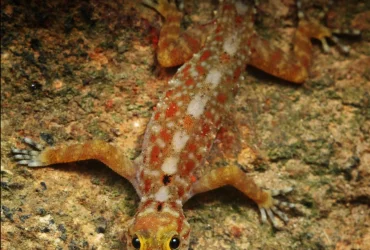 v12i1.305
v12i1.305ISSN: 1800-427X (printed)
eISSN: 1800-427X (online)
DOI:10.47605/tapro.v12i1.305
Submitted date: 4 August 2022
Accepted date: 29 January 2022
Published date: 12 May 2023
Pp. 36
Indian palm squirrel (Funambulus palmarum) feeds on spider egg sacs
P.D. Abegunawardhana & S.K. Bandara
*Corresponding author. E-mail: sanjaya.k.bandara@gmail.com
The Indian palm squirrel, Funambulus palmarum (Linnaeus, 1766) (Rodentia: Sciuridae) is known to feed on a wide range of plant items in the wild, including nuts, seeds, fruit, and bark, and will readily consume discarded food around human habitations. The species has been observed to prey opportunistically on insects such as termites and beetles. In addition, cannibalistic behaviour has also been recorded. Here we report the first observation of F. palmarum preying on spider egg sacs.
Section Editor: Sumudu Fernando
eISSN: 1800-427X (online)
DOI:10.47605/tapro.v12i1.305
Submitted date: 4 August 2022
Accepted date: 29 January 2022
Published date: 12 May 2023
Pp. 36
Indian palm squirrel (Funambulus palmarum) feeds on spider egg sacs
P.D. Abegunawardhana & S.K. Bandara
*Corresponding author. E-mail: sanjaya.k.bandara@gmail.com
The Indian palm squirrel, Funambulus palmarum (Linnaeus, 1766) (Rodentia: Sciuridae) is known to feed on a wide range of plant items in the wild, including nuts, seeds, fruit, and bark, and will readily consume discarded food around human habitations. The species has been observed to prey opportunistically on insects such as termites and beetles. In addition, cannibalistic behaviour has also been recorded. Here we report the first observation of F. palmarum preying on spider egg sacs.
Section Editor: Sumudu Fernando
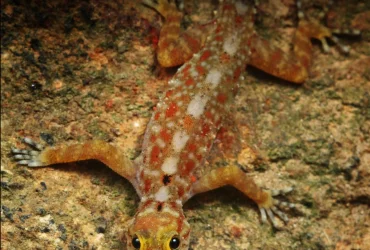 v12i1.304
v12i1.304ISSN: 1800-427X (printed)
eISSN: 1800-427X (online)
DOI:10.47605/tapro.v12i1.304
Submitted date: 1 August 2022
Accepted date: 29 January 2022
Published date: 12 May 2023
Pp. 34–35, pl. 20
Abnormal nest of baya weaver (Ploceus philippinus) from north Gujarat, India
K.J. Patel & H.J. Patel*
*Corresponding author. E-mail: hirenp9408@gmail.com
The baya weaver, Ploceus philippinus is a widespread resident bird throughout the Indian Subcontinent and is commonly found in open cultivation usually near water, in grasslands and scrublands. Its breeding season depends primarily on the southwest and northeast monsoon lasting from April to October. The species is particularly known for its unique nests built by males in colonies. The number of nests in each colony varies from 2–250. The nest is a retort-shaped structure with a long vertical entrance tube, densely woven out of strips of leaves of paddy, sugarcane or coarse grass, and blobs of mud are fixed inside the dome near the egg chamber. Moreover, the nests are usually built on branches of trees that overhang a water body which protects it from rats and other terrestrial animals. A complete baya weaver nest is a retort-shaped construction consisting of three parts: stalk, body, and entrance tube. Sharma (1995) classified 16 types of abnormal nests based on structural, orientation, and abnormalities.
Section Editor: Sumudu Fernando
eISSN: 1800-427X (online)
DOI:10.47605/tapro.v12i1.304
Submitted date: 1 August 2022
Accepted date: 29 January 2022
Published date: 12 May 2023
Pp. 34–35, pl. 20
Abnormal nest of baya weaver (Ploceus philippinus) from north Gujarat, India
K.J. Patel & H.J. Patel*
*Corresponding author. E-mail: hirenp9408@gmail.com
The baya weaver, Ploceus philippinus is a widespread resident bird throughout the Indian Subcontinent and is commonly found in open cultivation usually near water, in grasslands and scrublands. Its breeding season depends primarily on the southwest and northeast monsoon lasting from April to October. The species is particularly known for its unique nests built by males in colonies. The number of nests in each colony varies from 2–250. The nest is a retort-shaped structure with a long vertical entrance tube, densely woven out of strips of leaves of paddy, sugarcane or coarse grass, and blobs of mud are fixed inside the dome near the egg chamber. Moreover, the nests are usually built on branches of trees that overhang a water body which protects it from rats and other terrestrial animals. A complete baya weaver nest is a retort-shaped construction consisting of three parts: stalk, body, and entrance tube. Sharma (1995) classified 16 types of abnormal nests based on structural, orientation, and abnormalities.
Section Editor: Sumudu Fernando
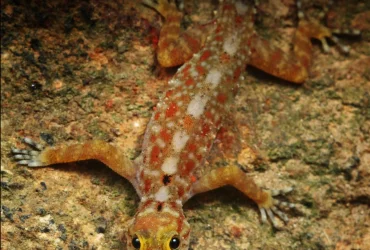 v12i1.303
v12i1.303ISSN: 1800-427X (printed)
eISSN: 1800-427X (online)
DOI:10.47605/tapro.v12i1.303
Submitted date: 20 July 2022
Accepted date: 29 December 2022
Published date: 12 May 2023
Pp. 33
The highest elevation record of river tern (Sterna aurantia) in the Indus River Basin
D. Sengupta*, Y. Upadhyay & T.R. Bhattacharya
*Corresponding author. E-mail: debaprasad.sengupta40@hotmail.com
The river tern (Sterna aurantia) is considered to be a globally vulnerable species. It is a native breeding resident of eastern and central Pakistan, Pan India (except the Trans-Himalayan region), Bangladesh, Myanmar, Thailand and Cambodia. It is a non-breeding resident in Nepal, southern Bhutan, Laos and Vietnam with vagrant records from Afghanistan and Iran. It breeds on sandy islands in freshwater lakes and rivers, and rarely estuaries.
Section Editor: Sumudu Fernando
eISSN: 1800-427X (online)
DOI:10.47605/tapro.v12i1.303
Submitted date: 20 July 2022
Accepted date: 29 December 2022
Published date: 12 May 2023
Pp. 33
The highest elevation record of river tern (Sterna aurantia) in the Indus River Basin
D. Sengupta*, Y. Upadhyay & T.R. Bhattacharya
*Corresponding author. E-mail: debaprasad.sengupta40@hotmail.com
The river tern (Sterna aurantia) is considered to be a globally vulnerable species. It is a native breeding resident of eastern and central Pakistan, Pan India (except the Trans-Himalayan region), Bangladesh, Myanmar, Thailand and Cambodia. It is a non-breeding resident in Nepal, southern Bhutan, Laos and Vietnam with vagrant records from Afghanistan and Iran. It breeds on sandy islands in freshwater lakes and rivers, and rarely estuaries.
Section Editor: Sumudu Fernando
Hubungi Kami
The ultimate aim of the journal is to provide an effective medium for communication of the latest and best scientific information.
Copyright © 2020 Taprobanica. All Rights Reserved
Jasa Pembuatan Website by IKT




